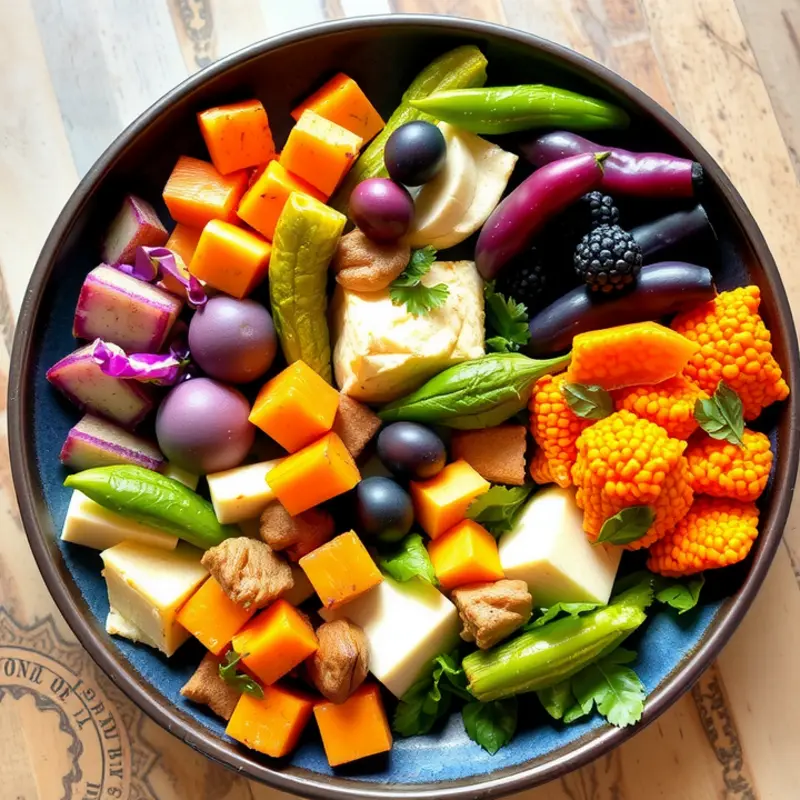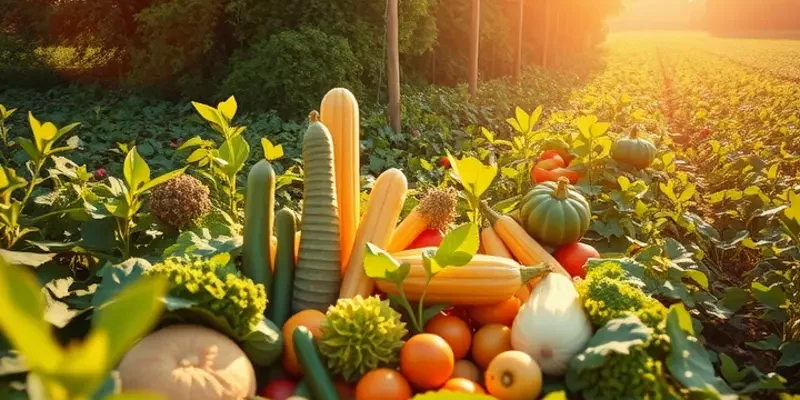As the world grapples with the alarming rates of food waste, upcycling offers a brilliant solution for environmentally-conscious individuals. It invites a fresh perspective on how we view leftovers and food scraps, transforming them from potential waste into valuable ingredients. By embracing upcycling practices, not only can we reduce our environmental footprint, but we can also add creativity and sustainability to our kitchens. Let’s explore innovative ways to incorporate upcycling into your food routine!
The Power of Upcycling: Understanding Food Waste

Food waste is a problem with significant environmental consequences. Worldwide, about one-third of the food produced is lost or wasted. This squanders resources and intensifies environmental issues, such as greenhouse gas emissions. Waste occurs at various stages: during production, processing, retail, and in homes.
At a consumer level, food waste is often a result of purchasing excess groceries, misunderstandings of expiration labels, or cooking more than needed. These practices lead not only to wasted food but also to wasted water, labor, and energy. When food waste ends up in landfills, it decomposes anaerobically, producing methane—a potent greenhouse gas.
Types of food waste differ, but all contribute to environmental strain. Avoidable food waste includes uneaten leftovers and spoiled groceries. Unavoidable waste comprises peels, bones, or shells, which are not typically consumed. Both types often find their final destination in landfills, exacerbating landfill pollution and resource depletion.
However, upcycling emerges as a compelling solution. Instead of discarding food scraps, upcycling repurposes them into new, edible products. This not only reduces waste but creates innovative food experiences. Besides decreasing greenhouse gases, upcycling supports biodiversity by decreasing the demand for single-crop agriculture. It shifts the focus toward more sustainable production practices.
For example, many cultures have long embraced upcycling through traditional recipes that utilize what might be considered waste ingredients. These can include using vegetable tops for pesto or stale bread for breadcrumbs. Each culinary tradition presents a wealth of inspiration for transforming the ordinary into delightful dishes.
Adopting upcycling in your kitchen means consciously purchasing, storing, and reusing foods. This involves planning meals around perishable ingredients and repurposing leftovers creatively. The Keto Egg Muffins recipe is a perfect illustration of this philosophy, transforming assorted vegetable scraps into a nutritious breakfast.
Ultimately, upcycling is more than a practical solution; it represents a mindset shift. It encourages consumers to appreciate the entire lifecycle of food, from farm to table—and beyond. By integrating upcycling strategies at home, individuals actively contribute to a more sustainable food system, fostering a culture of conservation over waste.
Recognizing the inherent value in food waste and tapping into its potential is an exciting frontier. Upcycling not only mitigates environmental impact but also enriches culinary creativity. Consumers are empowered to make informed, eco-conscious choices that resonate beyond their kitchens, impacting global communities and future generations.
Creative Upcycling Ideas: Transforming Scraps into Delights

Unlocking the culinary potential hidden in your kitchen scraps is both practical and rewarding. The possibilities are endless when transforming overlooked food scraps into culinary delights. First, let’s talk about vegetable peels. Commonly discarded, these peels are actually packed with nutrients and flavor. Transform them into a rich and nutritious broth by simmering them with water, herbs, and spices. This broth can serve as a foundation for soups, risottos, or sauces.
Stale bread is another opportunity in disguise. Instead of feeding it to the trash bin, consider making it an ally in the kitchen. Cut the bread into cubes, toss with olive oil, and season with your choice of herbs and spices. Bake until crispy for homemade croutons that add a crunchy element to salads or soups. Alternatively, blitz the stale bread into breadcrumbs which can be used for coating proteins or binding ingredients in recipes like meatballs.
Overripe fruits often find their way to the bin due to their perceived lack of appeal. However, they can be repurposed into something remarkable. Overripe bananas, for instance, are fantastic candidates for banana bread or muffins. Their natural sweetness and moisture enhance baked goods without extra sugar. Similarly, berries that are on their last leg can be turned into coulis or jams, perfect for topping desserts or stirring into yogurt.
Don’t overlook the herbs languishing in your refrigerator. Wilted herbs that might no longer be suitable for garnishing can be transformed into flavorful herb-infused oils. Simply blend the herbs with olive oil, strain, and store the oil in the fridge. This herb oil works great as a salad dressing base, for drizzling over pasta, or as an infusion to elevate grilled vegetables.
For those keen on upcycling initiatives, developing the habit of preserving excess food is crucial. Freezing is an effective option; freeze portions of soups or broths for a quick meal on busy days. Consider freezing fruits and vegetables right before they spoil to use in smoothies or soups later.
Innovative upcycling also involves developing a mindset of creativity and respect for ingredients. Plan meals with an eye toward using every part of an ingredient. Develop a repertoire that embraces versatility. For example, use zucchini noodles in keto recipes for a fresh departure from traditional pasta. Discover more innovative vegetable uses here.
As we embed upcycling habits into our daily routines, we not only reduce waste but also enhance our culinary creativity. By seeing the potential in every scrap, remnant, and peel, we transform our kitchens into places of innovation and sustainability. Our relationship with food deepens, and a new respect for the ingredients we consume flourishes, leading us toward a more mindful and eco-friendly way of living.
Final words
Embracing the upcycling movement not only minimizes food waste but also promotes creativity in the kitchen and encourages sustainable living. By exploring the potential of leftovers and being mindful of what we discard, environmentally-conscious individuals can significantly influence the trajectory of food waste. Transitioning to a more eco-friendly way of cooking can begin in small steps, all of which contribute to a larger positive impact on the planet. Commit to being a conscious eater, and let every food scrap tell its story through innovative upcycling, cooking, and nourishment.








